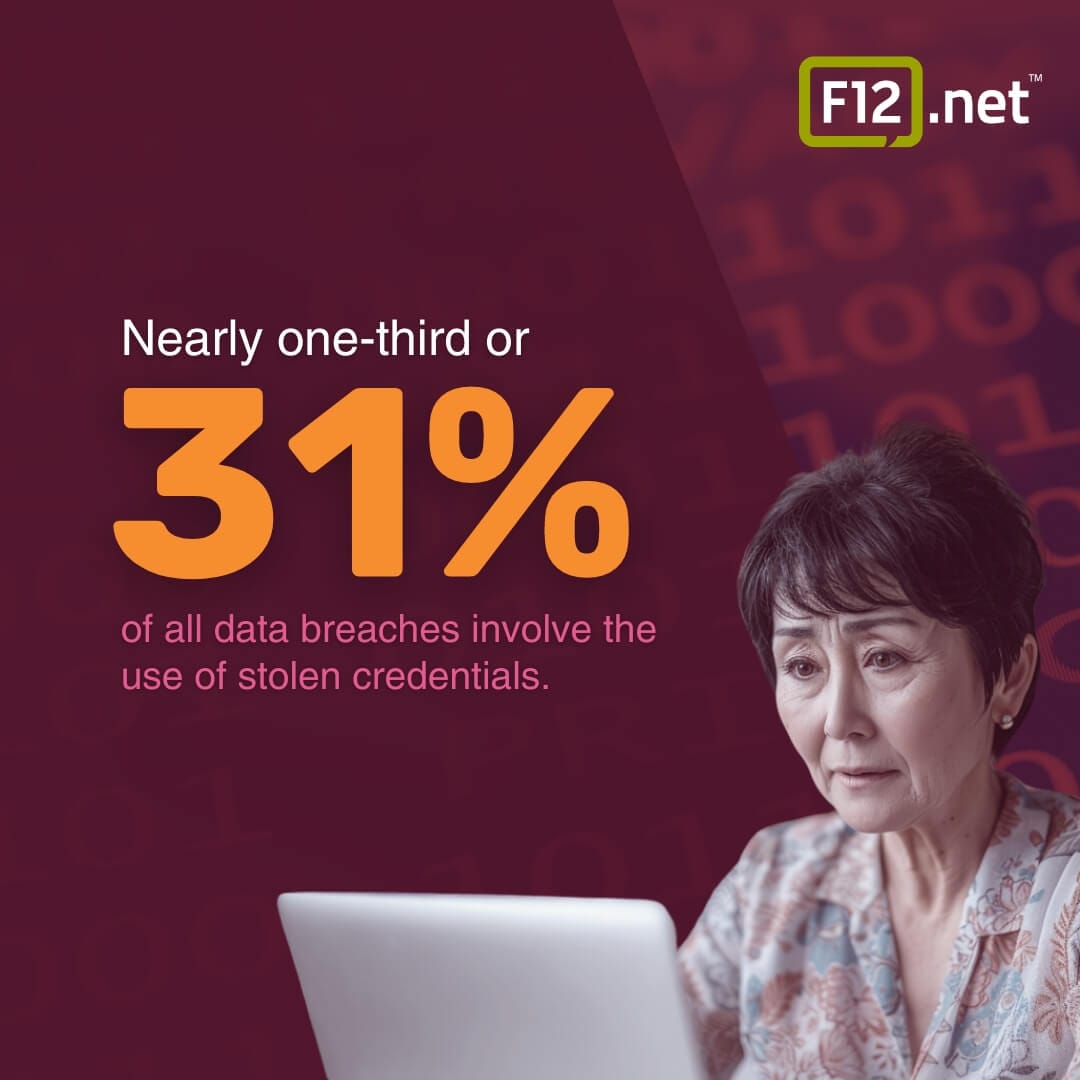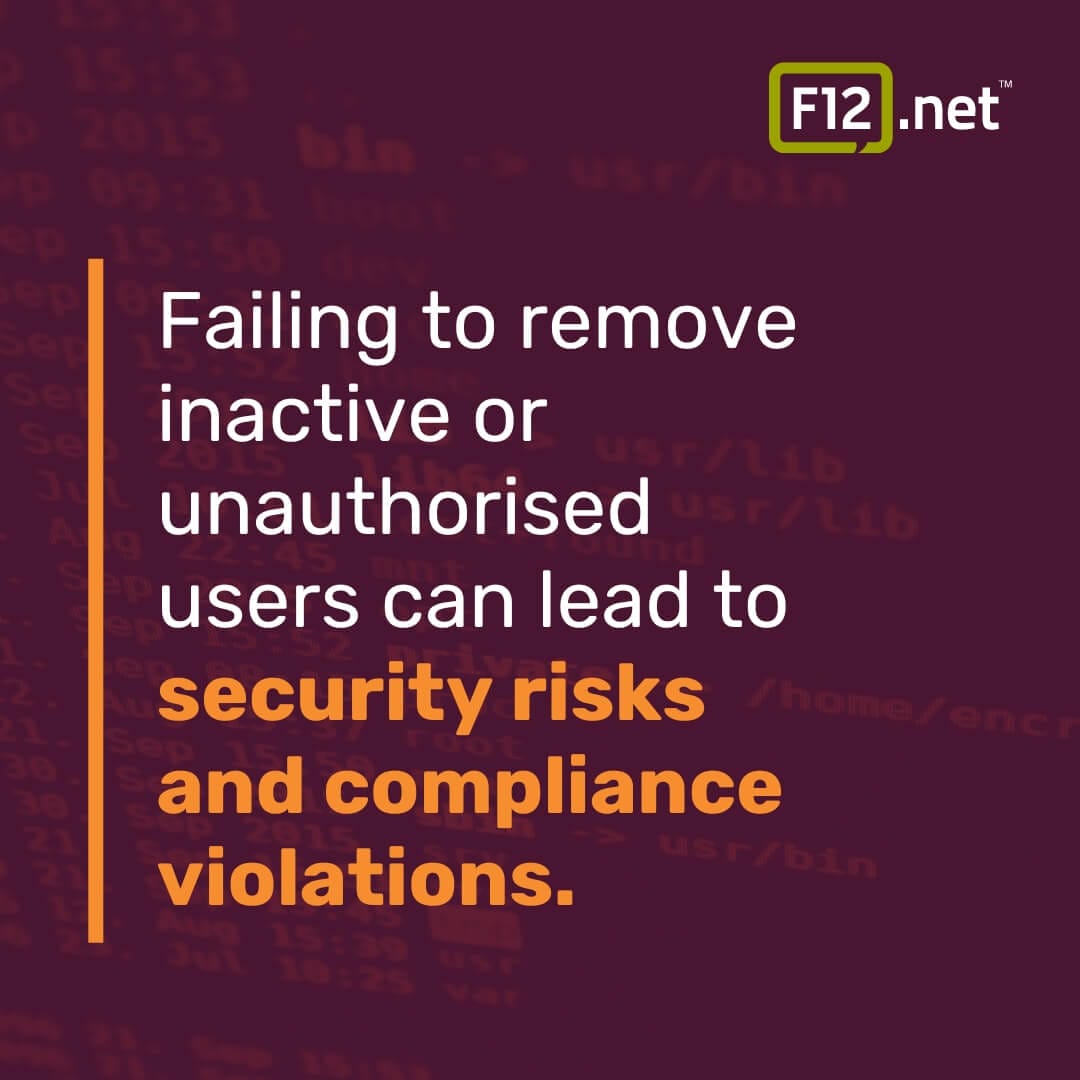
Brief: In this blog we explore the top user access control challenges in Desktop as a Service (DaaS) environments and provide proven tactics to overcome them. Learn about streamlining user provisioning and deprovisioning, using role-based access control (RBAC), integrating Single Sign-On (SSO), and implementing multi-factor authentication (MFA) to improve security and productivity.
“Trying to escape into the real world. It manipulated you into giving it your password so that it could access your laptop.” – Harold Finch: Person of Interest, 2011
User access control and authentication in Desktop as a Service (DaaS) environments can be a major headache for IT administrators.
With the rapid adoption of DaaS, organisations face numerous challenges, from streamlining user provisioning to ensuring strong security measures.
Just as Harold Finch highlighted the dangers of manipulation to gain access, real-world scenarios show how these threats manifest in serious breaches.
Consider the Target data breach in 2013, where attackers gained access through stolen credentials from a third-party vendor.
This breach exposed the personal information of over 40 millions customers.
If Target had automated their user provisioning and deprovisioning processes and implemented strong authentication practices, they could have significantly mitigated the risk.
In fact, nearly one-third (31%) of all data breaches involve the use of stolen credentials.

The 2024 Verizon Data Breach Investigations Report further emphasises this, noting that the use of stolen credentials has been a persistent issue in a large portion of data breaches over the past decade.
But fear not!
In this blog, we offer practical solutions to these challenges, covering topics such as:
- Automating user onboarding and offboarding
- Implementing role-based access control (RBAC)
- Adopting single sign-on (SSO)
- Enforcing multi-factor authentication (MFA)
- Ensuring compliance with regulations.
Get ready to take control of your DaaS environment and deliver a seamless, secure user experience.
Streamlining User Provisioning and Deprovisioning in DaaS
- Automate user onboarding and offboarding processes to save time and reduce errors
- Implement role-based access control (RBAC) for granular security and compliance
- Regularly review user access to ensure only authorised users have access to DaaS resources
Implementing Automated User Onboarding
Automated user onboarding is crucial for efficiently managing user access in DaaS environments.
By integrating your DaaS solution with identity management systems like Active Directory or Azure AD, you can streamline the process of creating user accounts, configuring profiles, and allocating resources.
To set up automated user onboarding:
- Configure your DaaS platform to sync with your identity management system. This allows user data to flow seamlessly between the two systems.
- Develop workflows that define the steps for user creation, profile configuration, and resource allocation. These workflows should include tasks such as assigning user roles, granting access to specific applications, and provisioning virtual desktops.
- Establish an approval process for user provisioning requests. This ensures that only authorised users are granted access to DaaS resources and helps maintain security and compliance.
Benefits of Automated User Onboarding
Automating user onboarding offers several key benefits:
- Reduces manual effort and saves time for IT administrators
- Minimises the risk of human error during user provisioning
- Ensures consistent and standardised user configurations across the organisation
- Enables faster onboarding of new users, improving productivity
Ensuring Timely User Deprovisioning
Just as important as efficient user onboarding is the timely deprovisioning of users who no longer require access to DaaS resources. Failing to remove inactive or unauthorised users can lead to security risks and compliance violations.

To ensure prompt user deprovisioning:
- Create automated deprovisioning workflows that are triggered by user status changes, such as employment termination or role transfers. These workflows should revoke access to DaaS resources and delete or disable user accounts.
- Implement regular access reviews to identify users who no longer need access to specific resources. This can be done through periodic audits or by using access governance tools that provide visibility into user permissions.
- Maintain detailed audit trails of all user provisioning and deprovisioning activities. This helps demonstrate compliance with security regulations and enables faster incident response in case of unauthorised access attempts.
Addressing DaaS Security Concerns
One common question surrounding DaaS is, “How secure is it?” While DaaS providers typically employ security measures, organisations must also take proactive steps to ensure the security of their DaaS environment.
Streamlining user provisioning and deprovisioning is a critical aspect of DaaS security. By implementing automated processes and regular access reviews, organisations can:
- Minimise the risk of unauthorised access to sensitive data and applications
- Prevent the accumulation of “ghost” user accounts that can be exploited by malicious actors
- Ensure compliance with industry regulations and data privacy laws
By following these best practices for user provisioning and deprovisioning, organisations can significantly improve the security and efficiency of their DaaS environment.
Implementing automated workflows, conducting regular access reviews, and maintaining audit trails are essential steps in overcoming the challenges of user access control in DaaS.
Utilising Role-Based Access Control (RBAC) for Granular Security
- Implement RBAC to ensure users have access only to the resources they need
- Define clear roles and permissions to reduce the risk of unauthorised access
- Regularly review and update roles to align with changing business requirements
Defining Clear User Roles and Permissions
Effective implementation of RBAC in a DaaS environment starts with clearly defining user roles and permissions. Collaborate closely with business stakeholders, such as department managers and team leads, to identify the specific access requirements for each user role.
This process involves mapping user roles to the resources, applications, and data they need to perform their job functions effectively.
Consider creating a matrix that outlines the permissions associated with each user role. This matrix should be detailed, specifying the level of access (e.g., read, write, execute) for each resource.
By documenting these permissions, you establish a clear framework for implementing RBAC and ensure that users have access to only the necessary resources.
| Role | Permissions | Resources |
| Cloud Administrator | Manage, Monitor | All scope |
| Read Only Administrator | Manage, Monitor | Custom scope |
| Host Administrator | Manage | Host connections and resource settings |
| Session Administrator | Monitor | Delivery groups and sessions |
Regularly reviewing and updating user roles is crucial to maintaining the effectiveness of RBAC. As organisations evolve and job responsibilities change, it’s essential to adjust user roles and permissions accordingly.
Schedule periodic reviews, at least quarterly, to assess whether the defined roles still align with the current organisational structure and business needs. This proactive approach helps prevent access creep and ensures that users maintain the appropriate level of access.
Implementing Least Privilege Access
The principle of least privilege is a cornerstone of effective access control in DaaS environments. It stipulates that users should be granted the minimum permissions necessary to perform their job functions.
By adhering to this principle, organisations can significantly reduce the risk of unauthorised access and minimise the potential impact of security breaches.
When implementing least privilege access, start by carefully evaluating the specific requirements of each user role.
Identify the critical resources, applications, and data that users need to access and grant permissions accordingly. Avoid the temptation to provide broad, sweeping access rights, as this can lead to unnecessary exposure and increased security risks.
One approach to enforcing least privilege access is to utilise just-in-time (JIT) access provisioning for sensitive resources. JIT access allows users to request temporary elevated permissions when needed, rather than having permanent access.

This approach ensures that users have access to sensitive resources only when absolutely necessary, reducing the window of opportunity for potential misuse or unauthorised access.
Monitoring and Auditing User Activities
Implementing RBAC and least privilege access is only half the battle. To maintain strong security, it’s essential to continuously monitor and audit user activities within the DaaS environment.
By keeping a close eye on user behaviour, organisations can detect and respond to potential security incidents promptly.
Implement comprehensive logging and monitoring solutions that capture user actions, including resource access attempts, configuration changes, and data modifications.
Regularly review these logs to identify any suspicious or unauthorised activities. Establish clear procedures for investigating and responding to potential security incidents, ensuring that the appropriate stakeholders are notified and corrective actions are taken swiftly.
Consider using advanced analytics and machine learning techniques to automate the detection of anomalous user behaviour. These tools can help identify patterns and deviations from normal user activity, alerting security teams to potential threats in real-time.
By proactively monitoring user activities, organisations can significantly reduce the risk of privilege abuse and unauthorised access.
Regularly Reviewing and Updating Access Controls
Implementing RBAC and least privilege access is not a one-time exercise. As organisations evolve and user roles change, it’s crucial to regularly review and update access controls to ensure they remain effective and aligned with business requirements.
Schedule periodic access control reviews, at least bi-annually, to assess the appropriateness of user roles and permissions. Involve relevant stakeholders, such as department managers and data owners, in the review process to ensure that access rights are still necessary and justified.
Use this opportunity to identify any outdated or unnecessary permissions and promptly revoke them.
In addition to scheduled reviews, establish a process for handling ad-hoc access requests and modifications. Develop clear guidelines and approval workflows to ensure that any changes to user roles and permissions are properly vetted and authorised.
Maintain detailed documentation of all access control changes, including the requestor, approver, and justification for the modification.
Empowering Users through Self-Service Access Management
While IT teams play a central role in implementing and managing access controls, empowering users through self-service access management can greatly streamline the process and reduce administrative overhead.
Provide users with a user-friendly self-service portal where they can request access to specific resources or applications. Implement an automated approval workflow that routes requests to the appropriate managers or data owners for review and authorisation.
This approach not only improves the efficiency of access provisioning but also promotes user accountability and ownership over their access rights.
Additionally, consider implementing self-service password management capabilities. Allow users to reset their own passwords, update their profile information, and manage their authentication methods (e.g., enabling multi-factor authentication) through the self-service portal.
By empowering users to take control of their access management, organisations can reduce help desk workload and improve overall user satisfaction.
By utilising role-based access control, implementing least privilege access, monitoring user activities, regularly reviewing access controls, and empowering users through self-service access management, organisations can establish a strong and granular security framework within their DaaS environment.
These proven tactics help mitigate the risks associated with unauthorised access, privilege abuse, and data breaches, ensuring that users have access to the resources they need while maintaining strong security.
Strengthening Security with Single Sign-On (SSO) Integration
- Streamline user authentication across applications with SSO protocols
- Improve user experience and productivity by reducing login fatigue
- Strengthen security by minimising password management overhead
Streamlining User Authentication Across Applications
Implementing Single Sign-On (SSO) protocols such as Security Assertion Markup Language (SAML) and OAuth can significantly streamline user authentication across applications in a Desktop-as-a-Service (DaaS) environment.
By integrating DaaS with identity providers (IdPs), organisations can achieve centralised user authentication, allowing users to access multiple applications with a single set of credentials.
SSO integration eliminates the need for users to remember and manage multiple usernames and passwords, reducing the risk of weak or reused passwords.
It also minimises the potential for password-related security breaches, as users only need to focus on maintaining the security of a single set of credentials.
Choosing the Right SSO Protocol
When selecting an SSO protocol for DaaS integration, it’s essential to consider factors such as compatibility with existing systems, ease of implementation, and the level of security provided.
SAML and OAuth are two widely-used SSO protocols that offer strong security features and broad compatibility with various IdPs and applications.
| Protocol | Key Features | Use Cases |
| SAML | XML-based, supports multiple authentication methods | Business environments, complex integrations |
| OAuth | Token-based, flexible and scalable | Mobile and web applications, APIs |
Improving User Experience and Productivity
Implementing SSO in a DaaS environment can significantly improve user experience and productivity. By reducing login fatigue and the need for users to manage multiple sets of credentials, SSO enables faster access to DaaS resources.
Users no longer need to spend time remembering and entering different usernames and passwords for each application they need to access.
Moreover, SSO minimises support requests related to user authentication issues, such as forgotten passwords or account lockouts.
IT teams can focus on more strategic tasks instead of dealing with repetitive password reset requests, leading to improved overall productivity.
Utilising SSO for Secure Third-Party Integrations
SSO integration extends beyond internal applications and can be used to secure third-party integrations within a DaaS environment.
By enabling SSO for third-party applications, organisations can maintain a consistent level of security and access control across their entire DaaS ecosystem.
Integrating SSO with third-party applications reduces the risk of security breaches caused by weak or compromised credentials. It also simplifies the user experience by allowing seamless access to external resources without the need for separate authentication processes.
Some popular third-party applications that support SSO integration with DaaS platforms include:
- Microsoft Office 365
- Google Workspace
- Salesforce
By implementing SSO integration in a DaaS environment, organisations can strengthen security, improve user experience, and boost productivity.
The centralised authentication provided by SSO reduces the risk of password-related security breaches, streamlines access to DaaS resources, and minimises support overhead related to user authentication issues.
Strengthening Security with Multi-Factor Authentication (MFA)
- Protect sensitive DaaS resources with multiple layers of authentication
- Strike a balance between security and user experience
- Implement MFA strategically to minimise user friction
Multi-factor authentication (MFA) is a critical component of a strong security strategy for Desktop as a Service (DaaS) environments.
By requiring users to provide multiple forms of identification before granting access, MFA adds an extra layer of protection against unauthorised access, even if a user’s password is compromised.
Implementing Multiple Authentication Factors
To effectively implement MFA in your DaaS environment, consider utilising a combination of authentication factors:
- Something the user knows: This includes passwords, PINs, or security questions. While passwords alone are not sufficient, they serve as the first line of defence.
- Something the user has: This can be a hardware token, a smart card, or even a mobile device that receives a one-time password (OTP) via SMS or a dedicated authenticator app.
- Something the user is: Biometric factors, such as fingerprints, facial recognition, or iris scans, provide a high level of assurance that the user is who they claim to be.
When implementing MFA, it’s essential to enforce it for high-risk or sensitive DaaS resources, such as administrative consoles, financial data, or confidential client information.
However, it’s equally important to provide users with flexible MFA options to accommodate different preferences and scenarios.
For example, some users may prefer using a hardware token, while others may find mobile push notifications more convenient.
Balancing Security and User Experience
While MFA is a powerful security tool, it can also introduce friction into the user experience if not implemented thoughtfully. To strike the right balance between security and usability, consider the following strategies:
Risk-Based Authentication
Implement risk-based authentication to prompt MFA only when necessary. This approach analyses various factors, such as the user’s location, device, or network, to determine the risk level of each login attempt.
Low-risk logins, such as those from a trusted device on the corporate network, may not require MFA, while high-risk logins, such as those from an unknown device or unusual location, would trigger an MFA prompt.
User-Friendly MFA Methods
Offer user-friendly MFA methods to minimise resistance and encourage adoption. For example, push notifications to a mobile device allow users to approve login requests with a single tap, eliminating the need to manually enter codes.
Hardware tokens, such as USB keys or smart cards, provide a tangible and easy-to-use authentication factor.
User Education and Support
Educate users on the importance of MFA and provide clear instructions for setup and usage.
Conduct training sessions to familiarise users with the MFA process and address any concerns they may have. Offer ongoing support to help users troubleshoot issues and ensure a smooth experience.
By implementing MFA strategically and balancing security with user experience, you can significantly improve the security of your DaaS environment without overburdening your users.
As you continue to refine your MFA approach, regularly assess its effectiveness and gather user feedback to identify areas for improvement.
Understanding the Basics of Desktop as a Service (DaaS)
- DaaS delivers virtual desktops and applications from the cloud, simplifying IT management
- Users access their desktops and apps from anywhere, on any device, enhancing flexibility
- DaaS offers scalability, cost efficiency, and improved security compared to traditional desktop models
Defining DaaS and Its Key Components
Desktop as a Service (DaaS) is a cloud computing model that delivers virtual desktops and applications to users from a centralised, cloud-based infrastructure.
In a DaaS environment, the cloud service provider manages the underlying hardware, software, and security, while users access their desktops and applications through a web browser or thin client.
The key components of a DaaS solution include:
- Virtual Desktop Infrastructure (VDI): The foundation of DaaS, VDI technology enables the creation and management of virtual desktops hosted on remote servers.
- Cloud Infrastructure: DaaS providers utilise the scalability and flexibility of cloud computing to host and deliver virtual desktops and applications.
- Secure Access: Users connect to their virtual desktops through secure protocols, such as SSL/TLS, ensuring data confidentiality and integrity.
- Management and Monitoring Tools: DaaS solutions come with centralised management consoles and monitoring tools that allow IT administrators to oversee the environment, troubleshoot issues, and ensure optimal performance.
Exploring the Benefits of DaaS Adoption
Organisations are increasingly turning to DaaS to overcome the limitations of traditional desktop models and embrace the benefits of cloud computing and cloud security.
Some of the key advantages of DaaS adoption include:
Scalability and Flexibility
DaaS enables organisations to quickly provision or decommission virtual desktops based on changing business needs.
This scalability allows companies to support remote workers, seasonal employees, or temporary contractors without significant upfront investments in hardware and software.
Moreover, DaaS empowers users to access their desktops and applications from anywhere, on any device, as long as they have an internet connection. This flexibility improves productivity and collaboration, particularly for remote and mobile workers.
Cost Efficiency
By shifting to a DaaS model, organisations can reduce capital expenses associated with purchasing and maintaining physical desktops, servers, and storage infrastructure.
DaaS providers typically offer predictable subscription-based pricing, allowing companies to better forecast and manage their IT costs.
Additionally, DaaS can help organisations save on energy consumption and real estate costs, as fewer physical desktops and on-premises servers are required.
Simplified Management and Security
DaaS offloads the burden of infrastructure maintenance, updates, and security to the service provider. This frees up IT teams to focus on more strategic initiatives and innovation, rather than routine desktop management tasks.
DaaS providers typically employ strict security measures, such as data encryption, multi-factor authentication, and advanced threat detection, to protect customer data and ensure compliance with industry regulations.
This centralised security management can be particularly beneficial for organisations with limited IT security resources.
Addressing Common Concerns and Misconceptions
Despite the numerous benefits of DaaS, some organisations may have concerns or misconceptions that hinder adoption. It’s essential to address these issues head-on to make informed decisions about implementing DaaS.
Performance and User Experience
One common concern is that virtual desktops may not provide the same level of performance and user experience as physical desktops.
However, advances in virtualisation technology and high-speed internet connectivity have largely mitigated these issues. Modern DaaS solutions can deliver near-native performance, ensuring a seamless user experience.
Data Security and Privacy
Some organisations may hesitate to store sensitive data in the cloud due to security and privacy concerns. However, reputable DaaS providers invest heavily in security measures and comply with stringent data protection regulations, such as GDPR and HIPAA.
In many cases, DaaS can offer better security than on-premises solutions, as providers have dedicated security teams and resources.
Understanding the fundamentals of DaaS is crucial. By embracing the benefits of scalability, flexibility, cost efficiency, and simplified management, companies can position themselves for the success of cloud-based desktops and applications.
Securing Access, Empowering Productivity
DaaS offers a flexible and scalable solution for delivering virtual desktops and applications. However, user access control challenges can hinder its full potential.
By implementing automated user provisioning and deprovisioning, using RBAC for granular security, integrating SSO for seamless authentication, and strengthening security with MFA, organisations can overcome these obstacles and ensure a secure and productive DaaS environment.
Embrace these proven tactics to streamline user management, improve security, and unlock the true benefits of DaaS.
Start by assessing your current access control processes and identifying areas for improvement.
Collaborate with key stakeholders to develop a comprehensive strategy that aligns with your organisation’s security and productivity goals.
How can you utilise these best practices to optimise user access control in your DaaS deployment?


